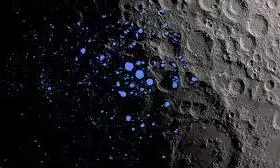
NASA study confirms solar wind as a source of water on the Moon
text_fieldsNASA researchers have confirmed that solar wind - the continuous stream of charged particles emitted by the Sun - may play a key role in generating water on the Moon's surface.
This discovery could reshape the way scientists and space agencies approach lunar exploration and resource utilisation.
The study reveals that water molecules and hydroxyl - both vital for supporting life and potential rocket fuel - can form when solar wind protons collide with oxygen present in the Moon’s rocky surface. The interaction leads to the creation of hydrogen atoms, which bond with the oxygen in the lunar regolith to form water and hydroxyl.
Interestingly, the low levels of deuterium in these molecules suggest that their hydrogen component originates from the Sun, supporting the theory that solar wind is the primary source.
NASA researchers carried out one of the most realistic laboratory simulations to date to recreate this process. Using a small particle accelerator, the team bombarded Apollo-era lunar dust samples to mimic solar wind exposure over several days. The experiment successfully demonstrated the formation of water molecules in conditions similar to those on the Moon.
The findings not only enhance our understanding of the Moon’s water distribution but also indicate that other airless celestial bodies in the solar system could host surface water created by the same mechanism.
Although most of the Moon's water is believed to be frozen in the permanently shadowed craters near the poles, the discovery that solar wind can also generate water in sunlit regions could significantly benefit future missions - especially NASA's Artemis program, which is targeting the Moon’s South Pole for upcoming astronaut landings.












